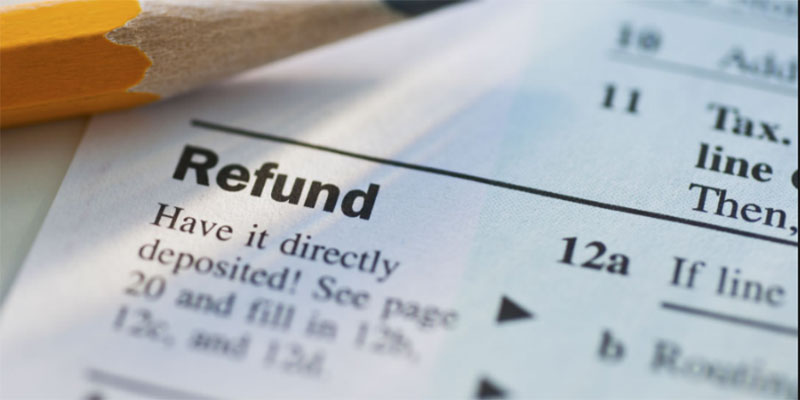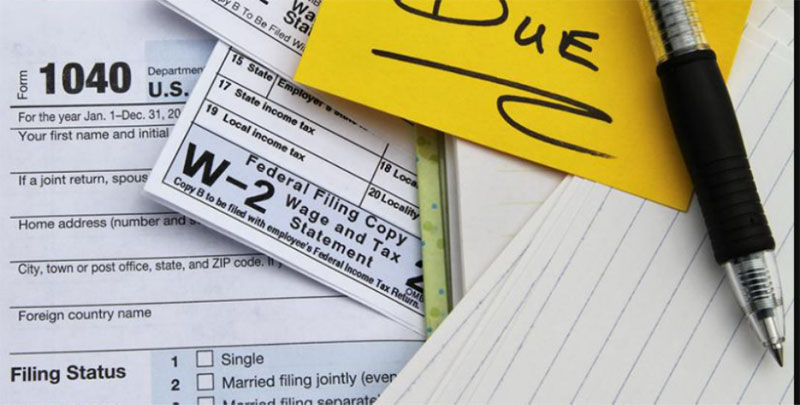How to Create a Savings Bond with Your Tax Refund
Oct 17, 2023 By Triston Martin
Early in 2010, this choice became a possibility for the first time. Improvements were introduced in 2011 to provide owners and beneficiaries with more alternatives for registration; you can choose between direct deposit or a check in the mail for any unused refund money.
Can I ask the IRS to help me save any or all of the refund I receive on my federal income tax return by direct deposit? 
You can, indeed. You can instruct the IRS to withhold some or all of your refund and send the remaining amount to your bank account when you file your tax return. By including Form 8888, Allocation of Refund (Including Savings Bond Purchases)PDF with your tax return, you can save some or all of your Savings Bond with Your Tax Refund. To order the IRS to purchase U.S. savings bonds, make a direct deposit to a savings or checking account, another savings vehicle, or request a paper check, refer to the instructions on Form 8888.
Do I have to buy bonds with my entire refund?
You can buy I bonds with all or a portion of your Savings Bond with Your Tax Refund. Bond requests must be made in $50 increments. You will receive a printed check in the mail for any leftover refund money that was not utilized to buy bonds, or you can choose to have it directly deposited into a checking or savings account.
What United States savings bonds may I purchase utilizing this simplified tax refund process?
Under this scheme, Series I U.S. Savings Bonds are sold. They offer protection from inflation and are low-risk, liquid savings products that pay interest. Savings bonds can be redeemed for the principal and accumulated interest at any time after the first year, even though they are not marketable because they cannot be purchased or sold in secondary securities markets. The information is below.
How many savings bonds can I purchase with my simplified tax refund?
Savings bonds can be purchased in $50 increments. They are purchased at face value, so if you use your refund to pay $50, you will receive a $50 savings bond. You may use your return to purchase up to $5,000 in paper series savings bonds throughout this calendar year. You can have the remaining portion of your refund directly deposited into your account or have any unused portion of your Savings Bond with Your Tax Refund sent to you in the form of a paper check.
Could you illustrate how this might operate?
Example: Bill qualifies for a federal income tax refund of $2,500. He chooses to put $1,000 of the refund aside by purchasing savings bonds, another $1,000 into his IRA, and the final $500 into his checking account by direct deposit from the IRS. Bill provides the IRS with these instructions by filling out Form 8888 and including it with his Form 1040.
Will I receive paper bond certificates in the mail? 
Yes. You will receive paper bond certificates in your name for any savings bonds you purchase with your tax refund. The savings bonds will be issued in your name and your spouse's name if you are married and filed a joint return. Savings bonds will be published in the name(s) you specify on Form 8888 if you buy them for someone else.
How are savings bond interest rates determined?
Series I Savings Bonds' interest rate is composed of two different rates:
Throughout the savings bond, a fixed rate of return is constant. The fixed rate of return is based on the benchmark 10-year Treasury inflation-protected marketable security's average market rates, with the tax deferral feature and other unique savings bonds taken into account.
A semi-annual inflation rate is subject to fluctuation and is determined by changes in the Consumer Price Index for all Urban Consumers. Every May and November, the Bureau of the Fiscal Service of the Treasury releases the rate.
What form do I use to report the interest on savings bonds?
You select one of two possibilities:
Federal tax is postponed until the year of full maturity, redemption, or other taxable disposition, depending on which occurs first. Cash Basis Reporting If you decide to defer interest reporting, follow the guidelines in Publication 550.
With accrual basis reporting, interest is reported annually as it is accumulated. As soon as you begin, you must continue to register all interest earned on savings bonds and notes you currently own and those you may buy. This could be helpful for I Bonds held in a child's name. Your earnings for a calendar year can be seen using the online savings bond calculator.

Top 5 Most Effective Tips To Become a Freelancer
To have a complete say over one's working conditions is a tremendous perk of freelancing. If you're a freelancer, you can accomplish your job whenever and whenever you choose. Such allurement is a significant factor in the expansion of the freelance market. According to a recent survey on freelancing conducted by Upwork, upwards of a third of the American workforce is currently engaged in freelance work. But how can one begin a career in freelance work? You've reached the perfect spot if you want to start freelancing but don't know where to start. This post will look at the seven strategies you may use in 2022 to launch a successful freelancing career
Dec 14, 2023 Susan Kelly

What Is the Rule of 72?
Rule of 72 is a simplified formula that determines how long the investment's value will take to increase its value according to the rate of return.
Jan 17, 2024 Triston Martin

What Is Publication 970 of the IRS?
The tax benefits that may be available to you if you are saving for or paying for your own school costs or, in many situations, the education costs of another student who is a member of your immediate family, are explained in this book. Most advantages are only relevant to higher education.
Oct 09, 2023 Triston Martin

Things You Need to Know about Every Tax Deadline
Employers and pension providers use the Pay As You Earn (PAYE) system to collect and remit the vast majority of employees' income taxes on the government's behalf. The majority of citizens are exempt from filing an annual tax return
Dec 28, 2023 Triston Martin

Best features of Credit Card Authorized User
An authorized user has been granted permission to use another individual's credit card. The principal cardholder is the owner of the credit account and is referred to by that Title.
Feb 19, 2024 Triston Martin

Deferred Compensation Plans vs. 401(k)s: What’s the Difference?
Both types of plans, in general, defer payment because the employee has chosen to wait to get cash in hand to get some other benefit, such as delaying the payment of taxes on the money or investing while delaying the payment of taxes. Some examples of these types of benefits include: delaying the payment of taxes on the money or investing while delaying the payment of taxes.
Oct 16, 2023 Susan Kelly